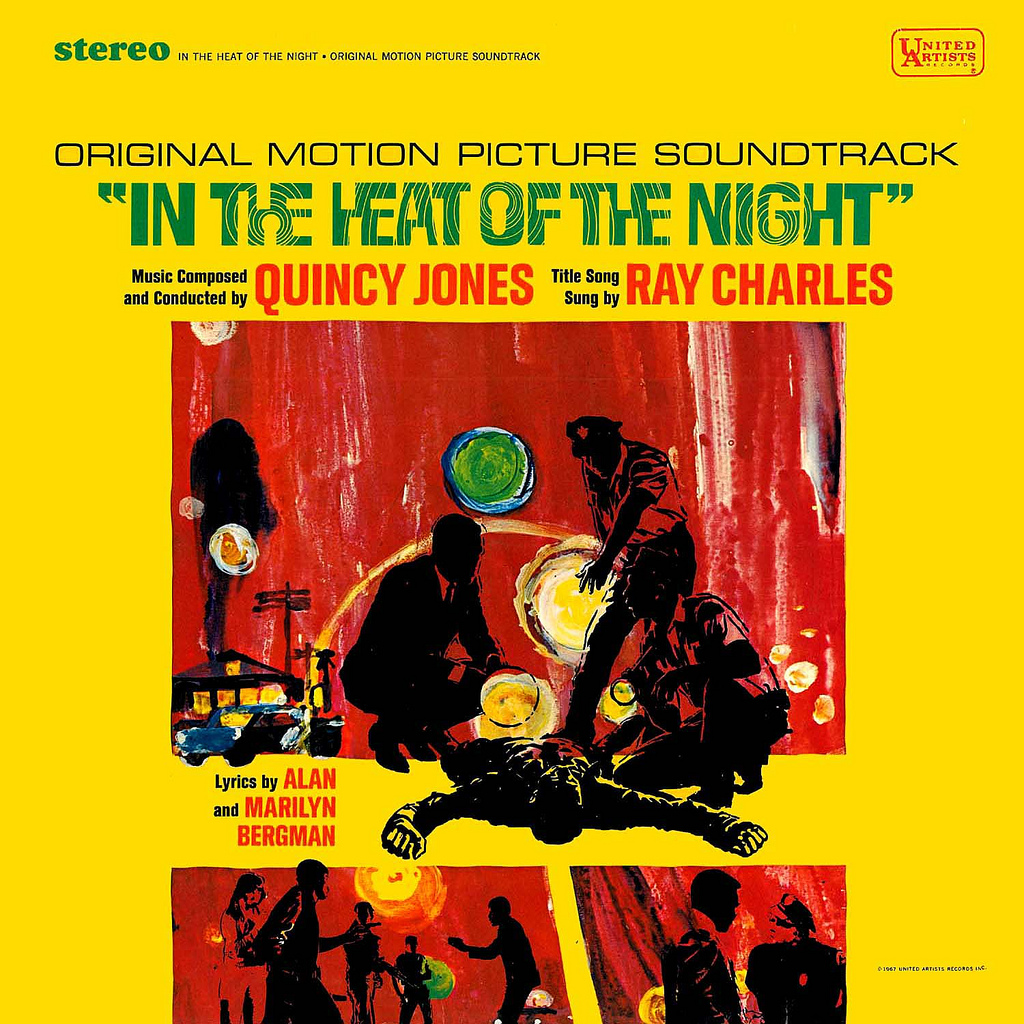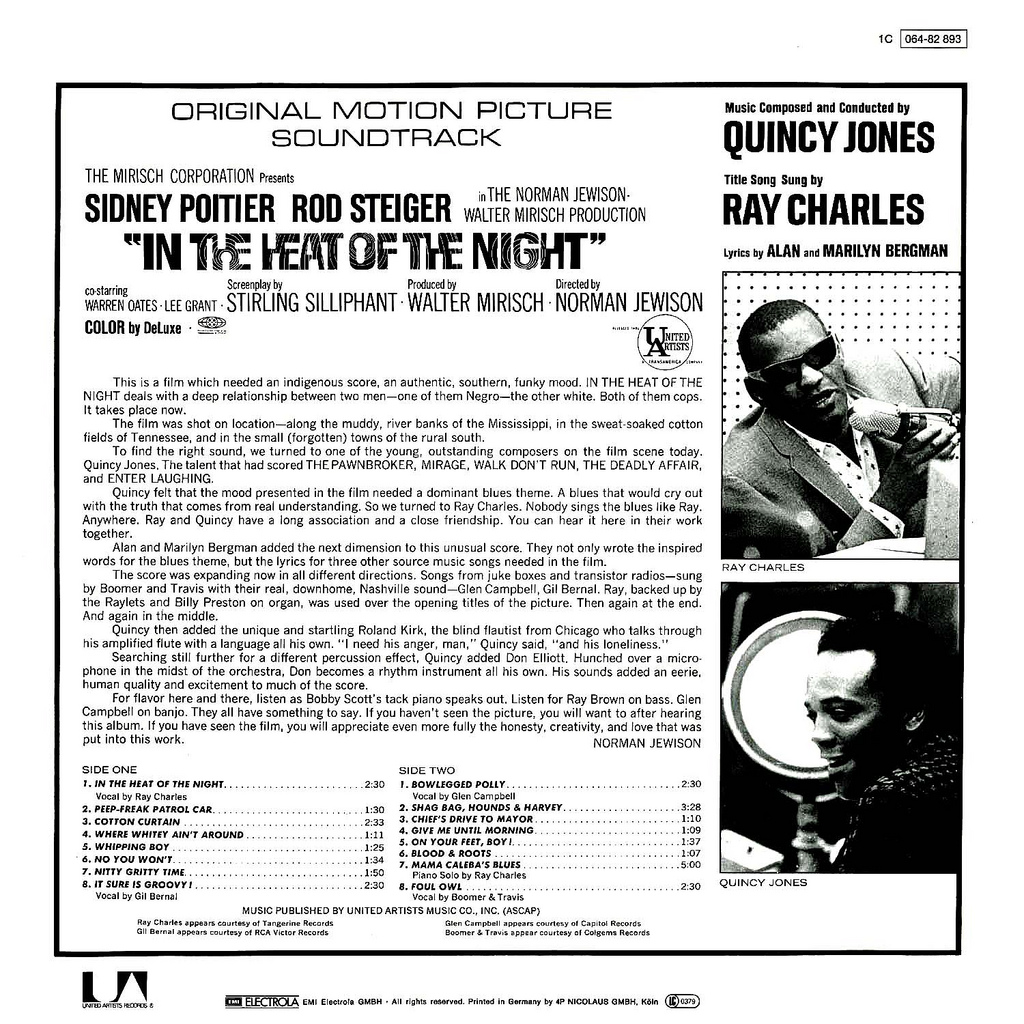In The Heat Of The Night

Single (A): ABC/Tangerine 10970, August 1967. B/w Something’s Got To Change.
Album3 (soundtrack): United Artists Records, 1C 064-82 893, 1967.
Compilation album: Singular Genius, Concord Records, 15 November 2011.
The song was arranged and produced by Quincy Jones for the 1967 film with the same title. Director Norman Jewison recalled songwriters Alan and Marilyn Bergman singing their bluesy tune for Ray Charles. After they finished, Charles said to Quincy Jones, “They’re brother and sister, right?” Jones replied, “No, no, they’re married, they’re white,” To which Charles countered “No, they ain’t.” Jewison: “It was probably the greatest compliment he could have paid them.” (Source here).
At a screening of the film in 2017, Jewison added another story: “Jewison told the audience that listening to the film’s slap scene convinced Ray Charles to write [sic!] and perform the film’s title song: ‘So [Charles] sat there, we turned the sound up all the way. He went on and he listened. Then, all of the sudden, he heard the slap, and he said, ‘He didn’t slap him back, did he?’ and I said, ‘Yeah.’ And he says, ‘Maximum green, man! Maximum green!’ He was so cool that I never knew what he was saying.
The single version (3’20) represents the complete taping. For the film a 2’35 cut-out was used, without the tenor sax-intro. The recording took place at Ray’s RPM International studio in Los Angeles, probably in May or June 1967. Quincy Jones won a Grammy Award (Best Score Soundtrack Album for a Motion Picture, Television or Other Visual Media) for the album.

Carol Kaye remembers Toots Thielemans (on harmonica, in Mama Caleb’s Blues? BS) as one of the session musicians, and herself playing electric bass. In an interview she elaborated, “What a great, great project. I worked with Quincy Jones on the film music, playing fuzz bass on a lot of the cues. That was pretty cool. Not many people knew you put fuzz on a bass; they thought it only worked with a guitar. Playing the title song with Ray Charles was a dream come true. Ray was so easy to work for. I thought he was a real salt-of-the-earth kind of man. We traded a lot of jokes back and forth. He was a good kidder. We cut the track at Ray’s studio. I asked to have his vocal way up in my headphones because that’s what I wanted to play to. On some records, you want to cook with the band. With Ray Charles, you wanted to cook with his singing. His vocal was the most important thing, so that’s what you had to support.” Kaye also remembers that the film version also had Ray Brown on bass. Earl Palmer possibly played the drums.
The single version is one of the very few tracks that Ray remixed for a later compilation.
Listen to some memories of Quincy here.
The not overly clear liner notes suggest that In The Heat Of The Night was taped with Roland Kirk on flute, and Don Elliot on drums, but I’m only sure about Carol Kaye’s base (uncredited) and the terrific organ playing by Billy Preston.

Comments